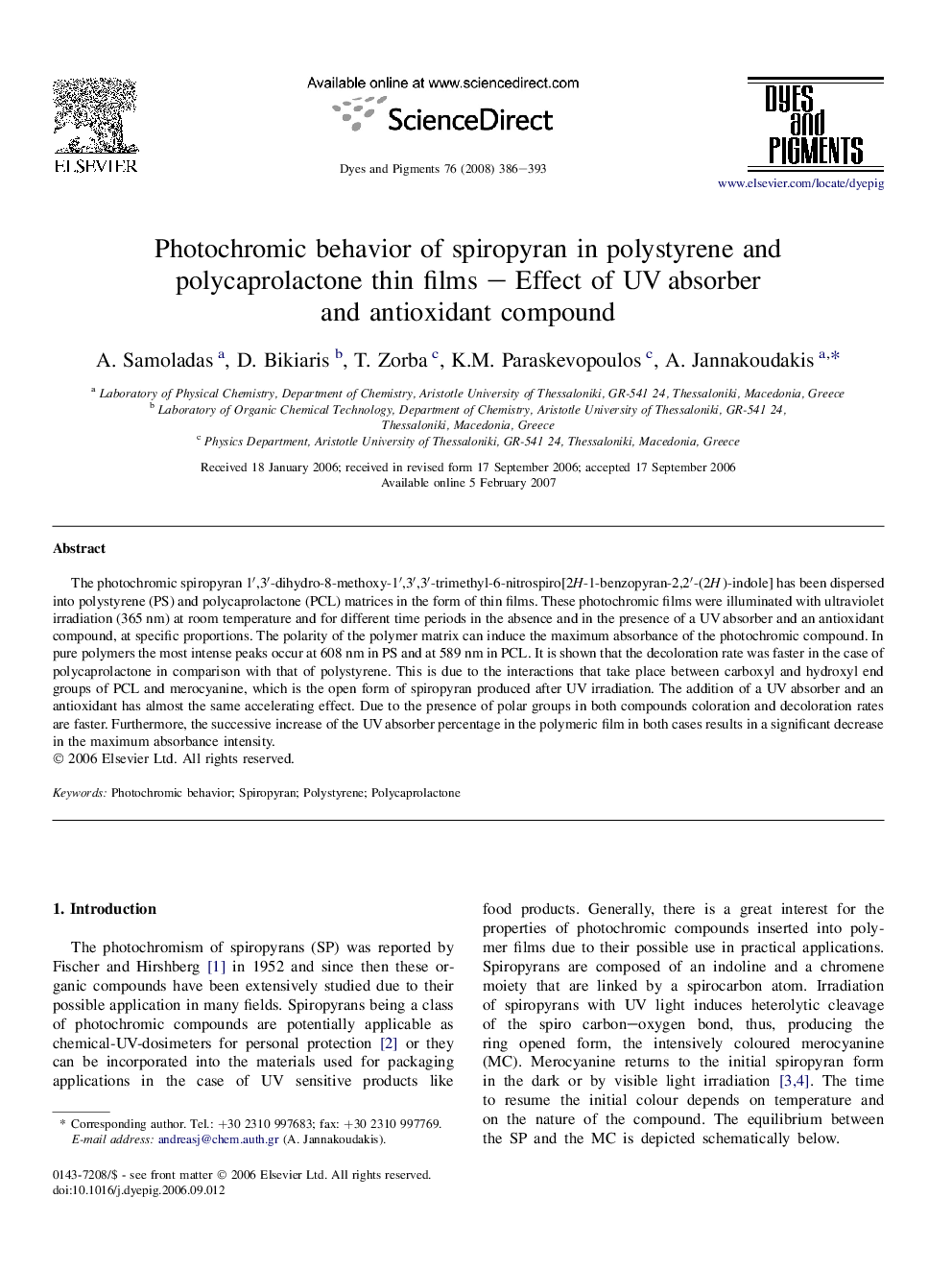| Article ID | Journal | Published Year | Pages | File Type |
|---|---|---|---|---|
| 178293 | Dyes and Pigments | 2008 | 8 Pages |
The photochromic spiropyran 1′,3′-dihydro-8-methoxy-1′,3′,3′-trimethyl-6-nitrospiro[2H-1-benzopyran-2,2′-(2H)-indole] has been dispersed into polystyrene (PS) and polycaprolactone (PCL) matrices in the form of thin films. These photochromic films were illuminated with ultraviolet irradiation (365 nm) at room temperature and for different time periods in the absence and in the presence of a UV absorber and an antioxidant compound, at specific proportions. The polarity of the polymer matrix can induce the maximum absorbance of the photochromic compound. In pure polymers the most intense peaks occur at 608 nm in PS and at 589 nm in PCL. It is shown that the decoloration rate was faster in the case of polycaprolactone in comparison with that of polystyrene. This is due to the interactions that take place between carboxyl and hydroxyl end groups of PCL and merocyanine, which is the open form of spiropyran produced after UV irradiation. The addition of a UV absorber and an antioxidant has almost the same accelerating effect. Due to the presence of polar groups in both compounds coloration and decoloration rates are faster. Furthermore, the successive increase of the UV absorber percentage in the polymeric film in both cases results in a significant decrease in the maximum absorbance intensity.
